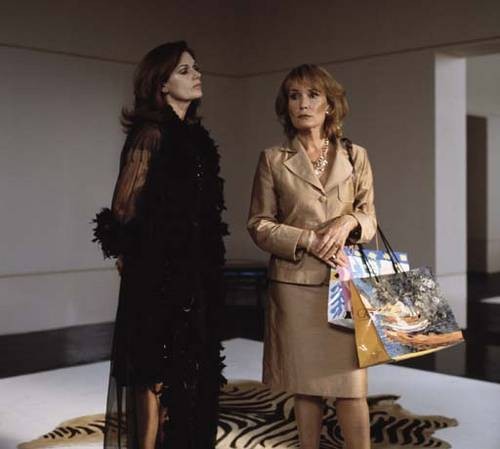Jeroen de Rijke / Willem de Rooij
08 Dec 2007 - 13 Apr 2008

Jeroen de Rijke / Willem de Rooij, Mandarin Ducks, 2005, 16mm Colorfilm, Optischer Sound, 36 Minuten, Courtesy Galerie Daniel Buchholz, Köln, (c) Willem de Rooij 2007
Since the start of their collaboration in 1994 Jeroen de Rijke (1970 – 2006) and Willem de Rooij (b. 1969) have produced a select corpus of 35mm and 16mm films, photographs, objects, installations and printed matters. Their collaborative work analyses the conventions of presentation and representation, and explores the areas of tension between socio-political and autonomous image production.
The exhibition at K21 is conceived as the counterpart to a twin exhibition in MAMbo, Bologna scheduled for April 2008. Each of these two exhibitions shows a different selection of de Rijke / de Rooij’s works, contextualized by documentation and source material. By partial reconstruction of previous exhibitions within both exhibitions a complex web of crossreferences is developed, making for a deeper understanding of de Rijke / de Rooij’s artistic and programmatic concerns.
The exhibition at K21 centers on two of the most important films and a slide installation: Mandarin Ducks (2005) – first screened at the Dutch Pavilion at the 51st Venice Biennale – as well as The Point of Departure (2002) and Orange (2004). Mandarin Ducks is a highly stylized conversation piece, in which several people negotiate physical and emotional space within a modernist domestic interior. The monologues and dialogues intersperse private and public topics in a style that is both icy and dramatic. In The Point of Departure the eye of the camera systematically explores the internal and external structure of an Oriental carpet. As striking and visually precise as this investigation is, it ultimately runs up against the limits of the possibility of understanding this exotic object. Finally, Orange is nothing more than a projection of various monochromatic hues of orange. At the same time, however, this abstract, almost hallucinatory modulation of a single color triggers associations with the Dutch national color and its ideological connotations.
In two partial reconstructions of previous shows works by amongst others Kurt Schwitters, Gerrit Rietveld, James Ensor and Pier Paolo Pasolini are presented next to documentation material. De Rijke / de Rooij’s focus on exhibitiondesign, and thus on the control over the contextualization of their own pieces becomes apparent. Like a russian doll, these exhibitions should be ‘opened up’ several times for the entire picture to be seen.
The exhibition at K21 is conceived as the counterpart to a twin exhibition in MAMbo, Bologna scheduled for April 2008. Each of these two exhibitions shows a different selection of de Rijke / de Rooij’s works, contextualized by documentation and source material. By partial reconstruction of previous exhibitions within both exhibitions a complex web of crossreferences is developed, making for a deeper understanding of de Rijke / de Rooij’s artistic and programmatic concerns.
The exhibition at K21 centers on two of the most important films and a slide installation: Mandarin Ducks (2005) – first screened at the Dutch Pavilion at the 51st Venice Biennale – as well as The Point of Departure (2002) and Orange (2004). Mandarin Ducks is a highly stylized conversation piece, in which several people negotiate physical and emotional space within a modernist domestic interior. The monologues and dialogues intersperse private and public topics in a style that is both icy and dramatic. In The Point of Departure the eye of the camera systematically explores the internal and external structure of an Oriental carpet. As striking and visually precise as this investigation is, it ultimately runs up against the limits of the possibility of understanding this exotic object. Finally, Orange is nothing more than a projection of various monochromatic hues of orange. At the same time, however, this abstract, almost hallucinatory modulation of a single color triggers associations with the Dutch national color and its ideological connotations.
In two partial reconstructions of previous shows works by amongst others Kurt Schwitters, Gerrit Rietveld, James Ensor and Pier Paolo Pasolini are presented next to documentation material. De Rijke / de Rooij’s focus on exhibitiondesign, and thus on the control over the contextualization of their own pieces becomes apparent. Like a russian doll, these exhibitions should be ‘opened up’ several times for the entire picture to be seen.
